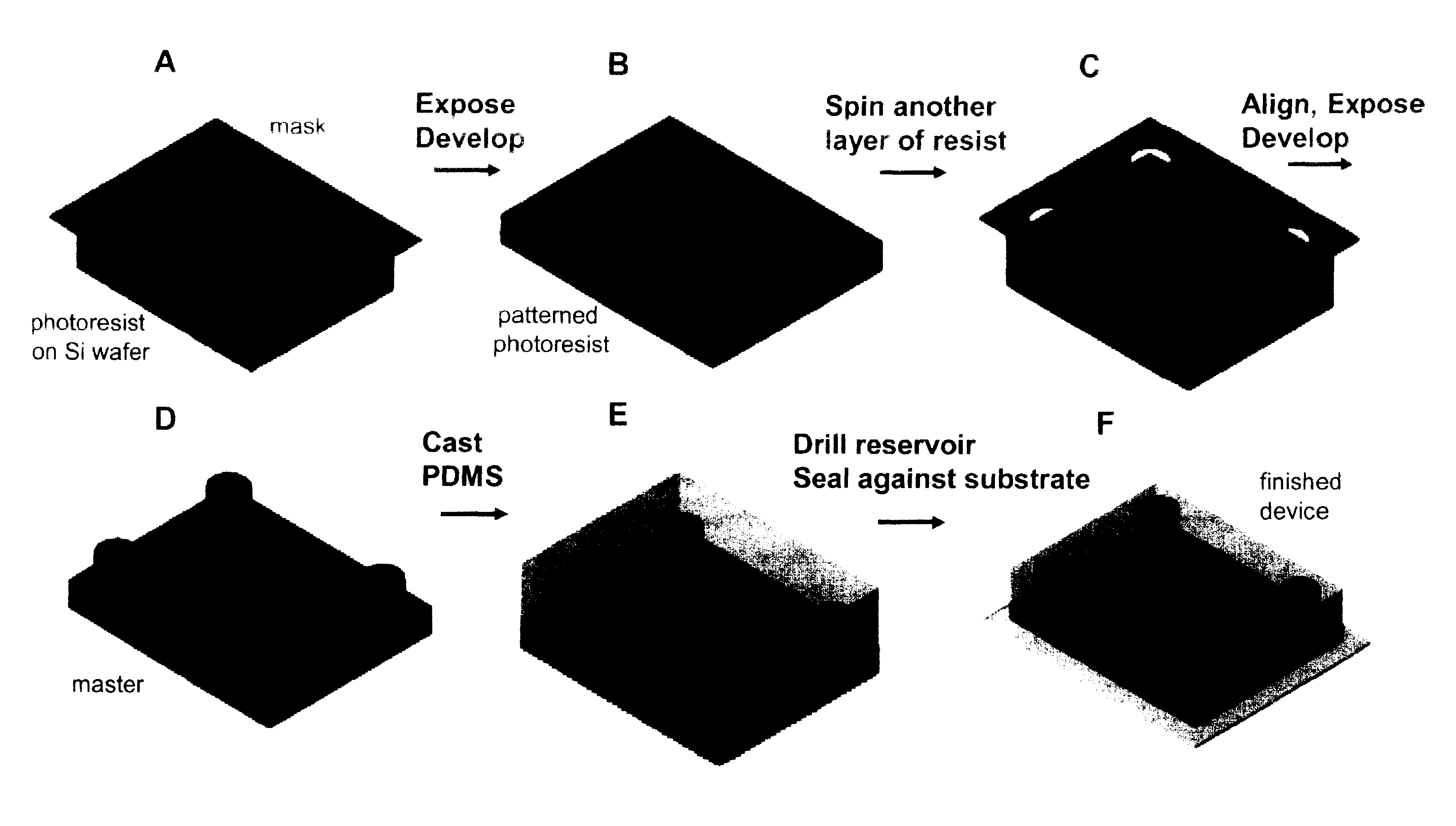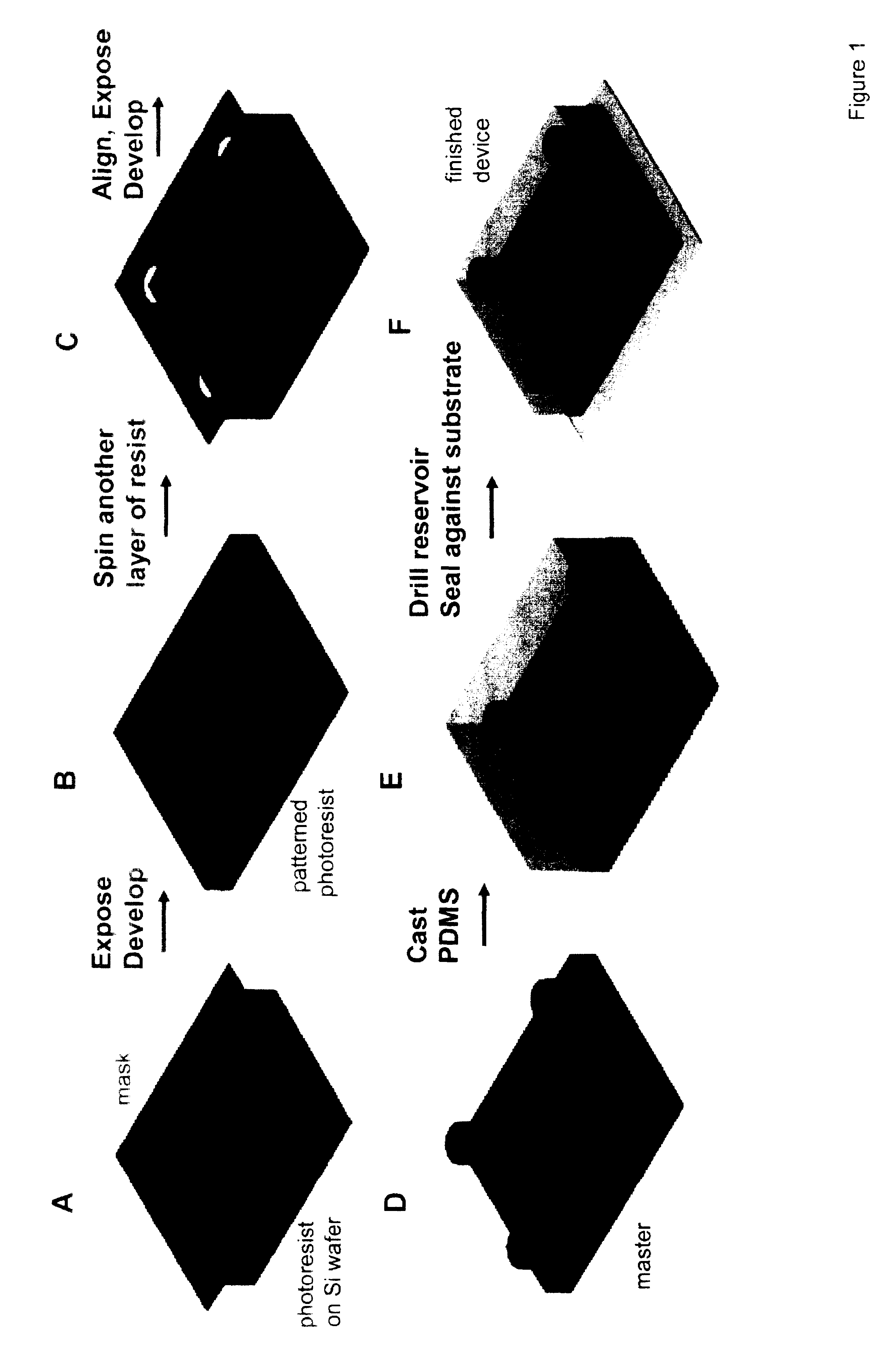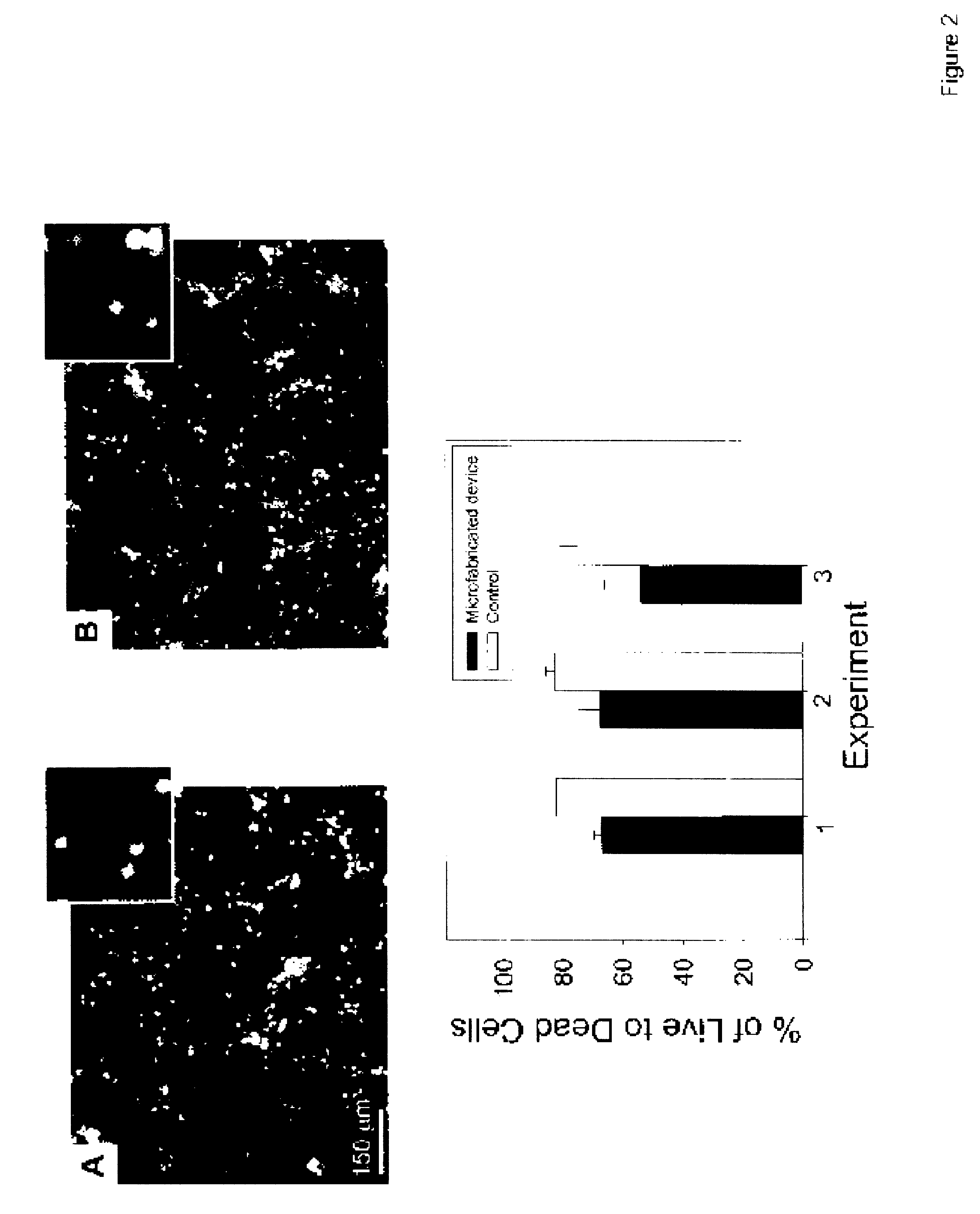Microfluidic device for enabling fluidic isolation among interconnected compartments within the apparatus and methods relating to same
a microfluidic device and fluid isolation technology, applied in the field of nanotechnology, can solve problems such as not always advantageous
- Summary
- Abstract
- Description
- Claims
- Application Information
AI Technical Summary
Benefits of technology
Problems solved by technology
Method used
Image
Examples
Embodiment Construction
[0025]Embodiments of the invention are directed to a Microfluidic Multi-Compartment Device for Neuroscience or other Research. In the following exemplary description numerous specific details are set forth in order to provide a more thorough understanding of embodiments of the invention. It will be apparent, however, to an artisan of ordinary skill that the present invention may be practiced without incorporating all aspects of the specific details described herein. The quantities and measurements contained herein are approximations that can in some instances be varied to any degree that enables the invention to accomplish the function for which it is designed. In other instances, specific features, quantities, or measurements well-known to those of ordinary skill in the art have not been described in detail so as not to obscure the invention. Readers should note, that although examples of the invention are set forth herein, the claims, and the full scope of any equivalents, are wha...
PUM
| Property | Measurement | Unit |
|---|---|---|
| length | aaaaa | aaaaa |
| height | aaaaa | aaaaa |
| barrier distance | aaaaa | aaaaa |
Abstract
Description
Claims
Application Information
 Login to View More
Login to View More - R&D
- Intellectual Property
- Life Sciences
- Materials
- Tech Scout
- Unparalleled Data Quality
- Higher Quality Content
- 60% Fewer Hallucinations
Browse by: Latest US Patents, China's latest patents, Technical Efficacy Thesaurus, Application Domain, Technology Topic, Popular Technical Reports.
© 2025 PatSnap. All rights reserved.Legal|Privacy policy|Modern Slavery Act Transparency Statement|Sitemap|About US| Contact US: help@patsnap.com



